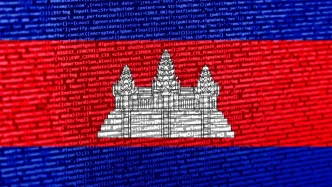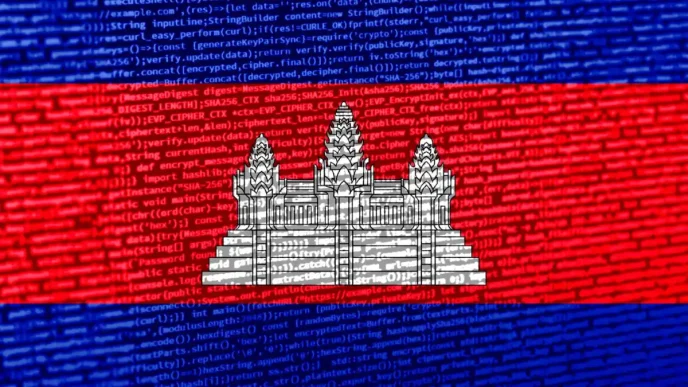As the dry season grips the Cửu Long (Mekong) Delta, authorities across the region’s 12 provinces and Cần Thơ City are intensifying efforts to prevent devastating forest fires. With vast swathes of mangrove forests and national parks at high risk, local governments are deploying a range of measures—from dredging canals to installing surveillance cameras—to protect these vital ecosystems amid increasingly arid conditions.
The Mekong Delta, a critical ecological and agricultural heartland in southern Vietnam, faces heightened fire risks each dry season, which began in December and is expected to persist for months. Forests in coastal areas and protected zones like U Minh Hạ National Park in Cà Mau Province are particularly vulnerable. This year, the stakes are even higher, with forecasts from the National Centre for Hydro-Meteorology Forecasting warning of worsening dry conditions that could exacerbate fire outbreaks.
In Cà Mau, the southernmost province of Vietnam, the People’s Committee has rolled out a comprehensive plan to safeguard 45,600 hectares of forest in the U Minh Hạ region and surrounding islands. Measures include building temporary dams and dredging canals to store water for firefighting, alongside repairing fire watch towers and procuring essential equipment. The urgency is palpable: these forests, rich in biodiversity, are classified as having a high fire risk, and a single spark could trigger catastrophic damage.
Further north, Đồng Tháp Province is on high alert, with nine forest areas at the second fire warning level and five at the third, according to the provincial Sub-department of Forest Protection. Nguyễn Tấn Thành, head of the sub-department, has urged forest owners to keep firefighting equipment ready and maintain round-the-clock vigilance at watch towers and protection stations. “We must detect and extinguish fires immediately,” he stressed, highlighting the need for stronger monitoring to prevent violations of forest protection rules. In a proactive move, forest owners are pumping water from rivers and canals during high tides to increase humidity and create reserves for emergencies.
National parks, often seen as the jewels of the delta’s natural heritage, are also tightening their defenses. At Tràm Chim National Park in Đồng Tháp’s Tam Nông District, director Nguyễn Văn Lâm noted that the park’s A4 zone faces an elevated fire risk. To counter this, fire breaks spanning 60-80 metres have been created, firefighting machines have been deployed across zones, and local communities have been mobilised to assist. Cameras installed in high-risk areas provide real-time monitoring, a modern tool complementing traditional prevention tactics.
Across the delta, provinces like Kiên Giang, with its 82,600 hectares of diverse forests, are reinforcing management and protection strategies. Deputy Chairman Giang Thanh Khoa of the Kiên Giang People’s Committee has directed local authorities to closely monitor forests and refine fire prevention plans. In An Giang Province, the mountainous town of Tịnh Biên is leveraging its busy spring tourism season—when visitors flock to pagodas—to raise awareness about forest protection. Working with travel companies, the town is educating tourists on fire prevention, a creative approach to safeguarding forests amid high foot traffic.
A Shrinking Green Shield
The Mekong Delta’s forests, predominantly mangroves, play a crucial role in protecting coastal areas from erosion and supporting biodiversity. Yet, their coverage has dwindled in recent years due to a mix of natural challenges, such as climate change, and human activities, including land conversion for agriculture and aquaculture. The loss of these forests not only heightens fire risks but also undermines the region’s resilience to environmental threats.
Recognising this, delta provinces are pushing reforestation alongside fire prevention. After the Tết (Lunar New Year) festival, initiatives like the “Tree Planting Festival to Forever Remember Uncle Hồ” have taken root. In An Giang, the provincial People’s Committee launched a campaign on 3 February to plant 3.1 million trees in 2025, targeting erosion-prone areas along canals and dams. Cà Mau’s Border Guard Command echoed this effort on the same day, while Trà Vinh Province aims to create 150 hectares of new forest this year, boosting its forest cover from 4.1% to 4.5%. Trà Vinh is also courting domestic and foreign investment to support forest growth and protection, particularly in coastal and riverine zones.
These reforestation drives are a beacon of hope, but they come against a backdrop of immediate danger. The dry season’s harsh conditions test the delta’s preparedness, with every province racing to maintain firefighting infrastructure. Fire breaks are being cut through dense vegetation, canals are being dredged to store more water, and inflammable materials are being cleared from forest floors. Pump stations and watch towers dot the landscape, while surveillance cameras in key locations offer an extra layer of security.
Climate and Human Pressures Collide
The battle against forest fires in the Mekong Delta is not just a seasonal struggle; it reflects broader environmental and societal challenges. Climate change has intensified dry spells, reducing humidity in forest areas and making them more susceptible to ignition. At the same time, human encroachment—whether through illegal logging or careless activities—remains a persistent threat. A discarded cigarette or an uncontrolled burn can spiral into a blaze that consumes thousands of hectares.
Local authorities are acutely aware of these intersecting risks. In Đồng Tháp, for instance, forest management units are not only tasked with fire prevention but also with curbing violations that could spark incidents. In Kiên Giang, the emphasis on monitoring and community engagement signals a recognition that technology alone cannot protect forests—human vigilance and responsibility are equally vital.
Yet, resources are often stretched thin. While larger national parks like Tràm Chim can afford advanced tools such as cameras, smaller forest areas rely on manual labour and community support. The disparity in capacity across the delta’s provinces raises questions about whether all forests are equally protected. If a major fire were to break out in a less-equipped region, the response could be delayed, with devastating consequences for both the environment and local livelihoods.
Looking Ahead: A Fragile Balance
As the dry season progresses, the Mekong Delta’s fight against forest fires is a stark reminder of the region’s environmental fragility. The mangroves and national parks are more than scenic landscapes; they are buffers against coastal erosion, habitats for rare species, and sources of sustenance for communities. Losing them to fire—or to the slow creep of degradation—would be a blow to Vietnam’s ecological and economic future.
For now, the delta’s provinces are holding the line with a mix of traditional and innovative strategies. But the long-term solution lies in addressing the root causes: mitigating climate change, curbing deforestation, and fostering sustainable land use. Reforestation projects, while promising, must be scaled up and sustained beyond symbolic gestures. Community education, as seen in Tịnh Biên, could also play a pivotal role in building a culture of conservation.
The coming weeks will test the delta’s resilience. If the dry season worsens as predicted, even the most robust preparations may be pushed to their limits. Authorities, forest owners, and residents alike must remain vigilant, knowing that a single lapse could undo months of effort. For the Mekong Delta, protecting its forests is not just a matter of policy—it is a fight for survival.














